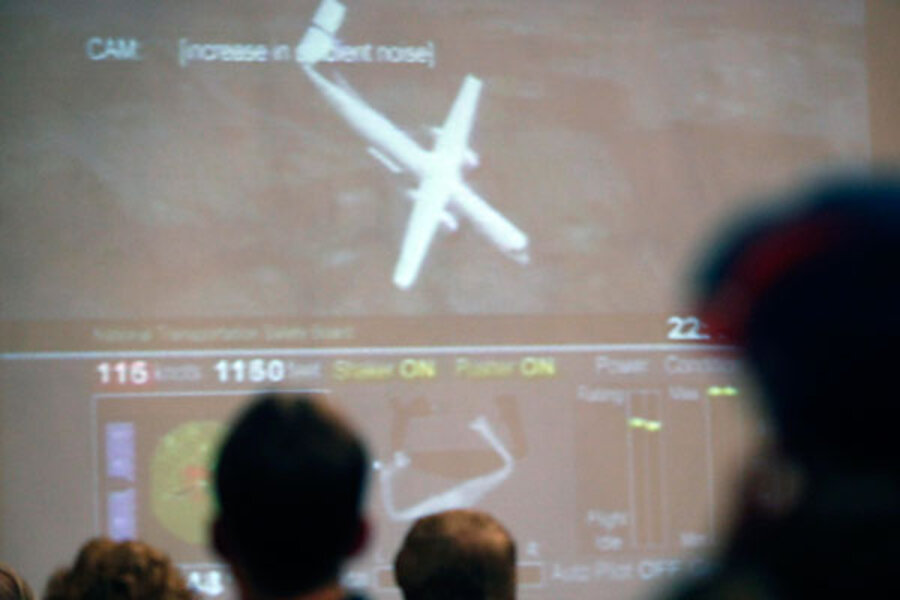Probe blames pilot errors for Colgan Air's Buffalo crash
Loading...
Federal investigators Tuesday blamed pilot errors and poor training as key factors in the crash of a Colgan Air flight a year ago, which drew national attention to safety challenges facing small regional carriers.
The crash, which happened when the plane was near landing in Buffalo, N.Y., killed 49 people on board and one person in a house on the ground.
With the plane at risk of stalling on the night of Feb. 12, 2009, the pilot responded to a low-speed warning indicator by pulling the nose of the plane up – the opposite of what he should have done. The pilot continued to pull the plane up overriding automated controls designed to correct the error. The plane then stalled and crashed.
A hearing by the National Transportation Safety Board on Tuesday capped a year-long probe that focused not only on Colgan but also on wider safety concerns among regional airlines, which typically have less-experienced and lower-paid pilots. Often larger airlines have "code-share" agreements to sell seats on the regional carriers (the Colgan flight was also marketed under the Continental Connections name).
"We are looking for one level of safety," with standards that apply to large and small carriers alike, said Robert Sumwalt, an NTSB board member at the hearing.
Small regional carriers operate half of all flights in the US, accounting for one-fourth of airline passengers.
The captain of the Colgan flight, Marvin Renslow, had a spotty track record in certifications and proficiency checks going back almost two decades.
“[He] had not established a good foundation ... early in his career," said Roger Cox, an NTSB safety expert, at the hearing. Colgan, which had hired Mr. Renslow in 2005, had no formal program for weak pilots.
The other occupant of the cockpit, first officer Rebecca Lynne Shaw, was young and relatively inexperienced.
The NTSB concluded that Renslow’s inappropriate response to a "stick shaker" warning signal was the crash's probable cause. Contributing factors included his failure to monitor other warning signals of the plane's slowing speed, and violation of "sterile cockpit" rules against casual conversation at low altitudes. The board also said Colgan had failed to spell out adequate procedures for crews to monitor air speed when icing is a risk.
The pilots may have been fatigued. Renslow had spent the previous night in an airport crew room, in violation of company policy. But the board voted down a proposal to list fatigue as a contributing factor in the crash.
Following its investigation, the board is calling for a range of safety improvements. These include improved training practices for dealing with a stall situation, and improvements in the quality of simulators used for that training.
The NTSB actions come as Congress is considering air-safety legislation that would boost required flight experience before becoming a commercial pilot.
The investigation has raised questions not only about industry practices but also about the Federal Aviation Administration (FAA), and whether it is moving fast and aggressively enough on safety concerns. The FAA has yet to update fatigue policies, even though the issue has been on annual NTSB "most wanted" lists of safety concerns for two decades.
---
Follow us on Twitter.





